
New Year, New Garden - Part II: Deciding What to Plant in Your Space

I’ve read that planning a vacation is more fun than actually going on one. Unlike a vacation, planning a garden isn’t where the fun ends, and maintaining and reaping the rewards of your garden keeps that joy going! In our last blog, we talked about preparing for a new garden by determining our space (you can catch up or revisit it HERE.) At this point, you should have a good idea of what kind of light and soil conditions you have in your upcoming garden space. This will dictate your plant selection and what you can grow. For those who had specific plants in mind for their gardens, you have now determined if your garden space is conducive to those plants from a light, soil, and practical standpoint.
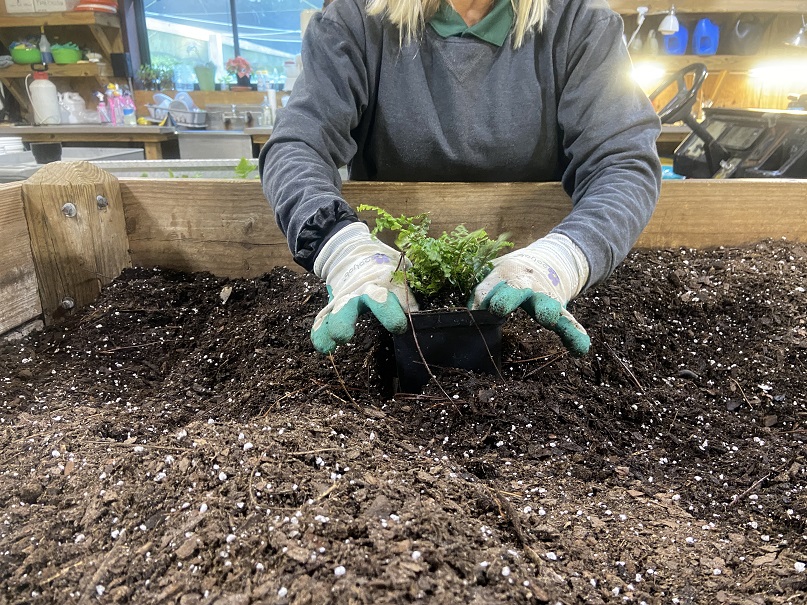 Potting a plant in the Brookgreen Gardens' Lachicotte Horticulture Complex Greenhouse
Potting a plant in the Brookgreen Gardens' Lachicotte Horticulture Complex Greenhouse
Now that we have those basics all figured out, it’s time to start thinking about what plants you want. At Brookgreen Gardens, making our plant selections is one of the most fun and exciting parts of the job! We turn to seed catalogs, plant brokers, and nurseries to help us source the plants we bring in (while also exercising great restraint to not drool over all the neat plants out there!). While we can access a wide array of plants, we are still limited by what our sources sell, and sometimes we can’t find everything we want, like that really cool plant we saw on a Google search. If you search online for plants like we do, then you know exactly what I’m talking about!
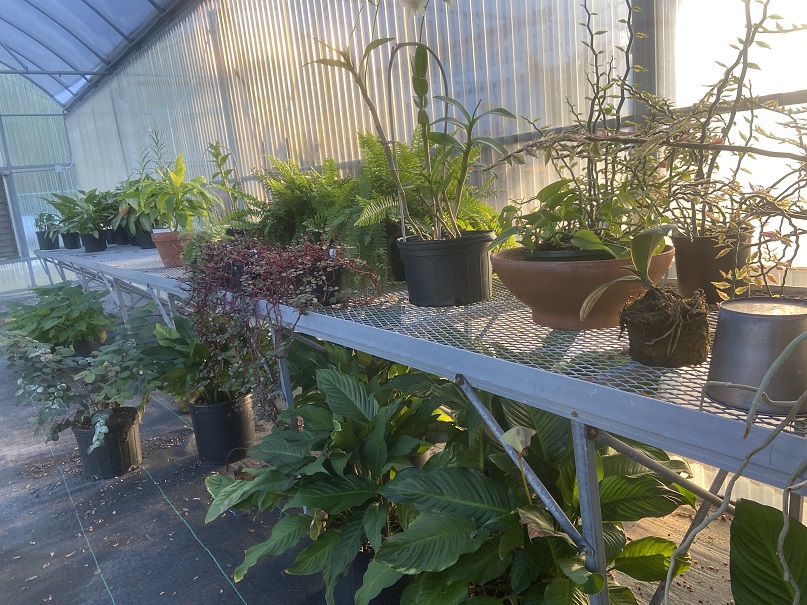 Tender and tropical plants housed inside one of the greenhouse bays of the Lachicotte Horticulture Complex
Tender and tropical plants housed inside one of the greenhouse bays of the Lachicotte Horticulture Complex
For this reason, I encourage you to head in to this with a broad, general idea of what plants you want. For instance, instead of looking for Japanese cedar ‘Globosa Nana’ (Cryptomeria japonica ‘Globosa Nana’), determine what qualities that plant has that you want. For example, looking for evergreen shrubs that stay round and short, which is two qualities that Japanese cedar ‘Globosa Nana’ possesses.
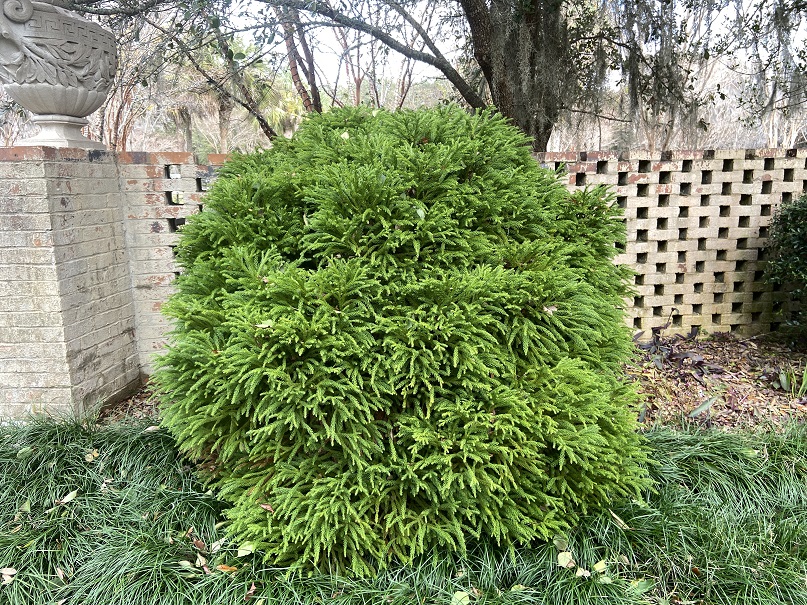 Japanese cedar ‘Globosa Nana’ (Cryptomeria japonica ‘Globosa Nana’) in the Upper Right Wing
Japanese cedar ‘Globosa Nana’ (Cryptomeria japonica ‘Globosa Nana’) in the Upper Right Wing
One of the biggest disappointments is knowing the exact plant you want, but then discovering you can’t actually find it for sale! To save yourself from this heartbreak, I recommend visiting local nurseries (and of course your favorite public gardens’ plant sales, like ours on April 23rd (Spring Plant Sale) to see what plants they are selling. Use the initial visit as a recon mission to write down some plants you like so you can go home and do a little research into their sun and soil needs, as well as determining if it will work in your space. Alternatively, use your smart phone to look them up on the spot and get the basic details you need. Additionally, you will want to determine what USDA Cold Hardiness Zones the plant is hardy in.
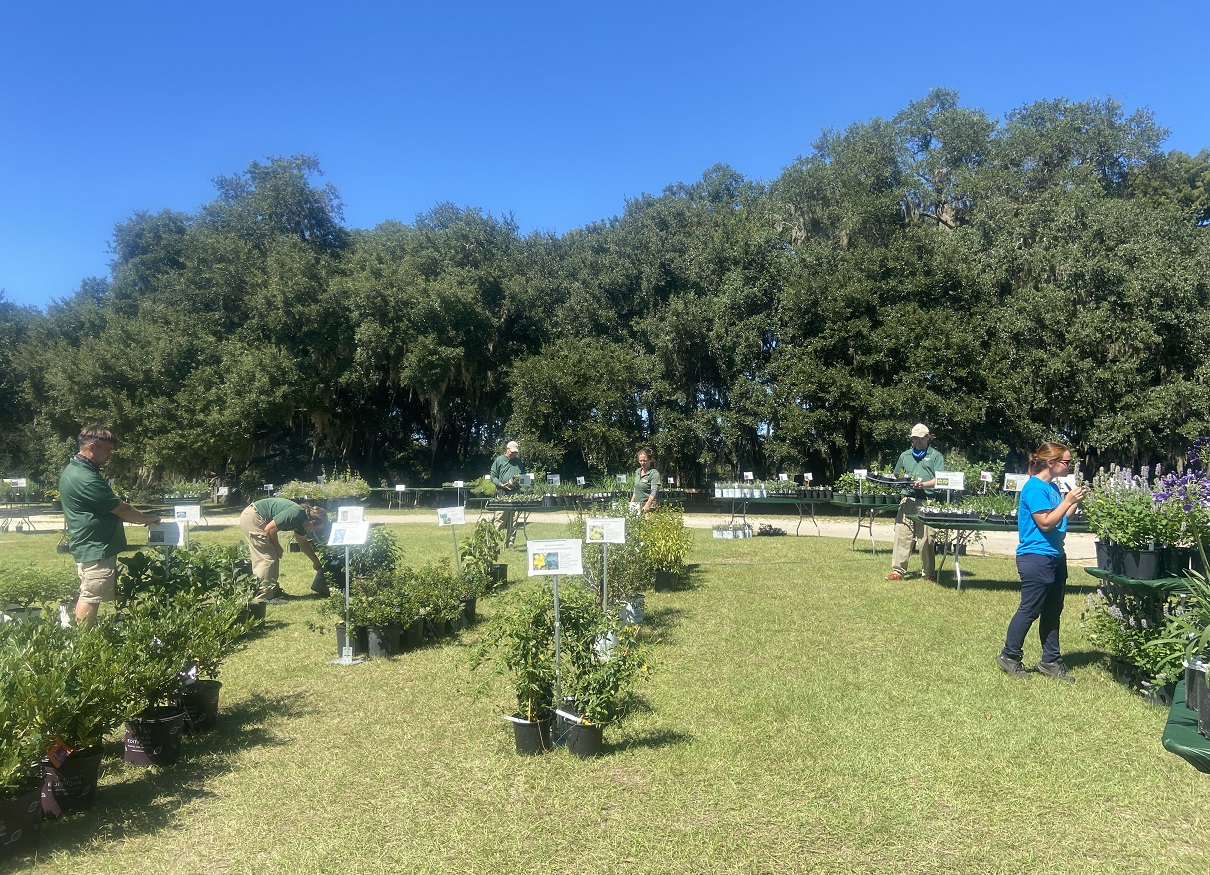 Brookgreen Gardens' Fall Plant Sale 2021 being tended by the Horticulture staff
Brookgreen Gardens' Fall Plant Sale 2021 being tended by the Horticulture staff
In a very basic sense, USDA Cold Hardiness Zones help you know if a plant is going to be an annual or perennial in your area. Before you investigate a plant’s zone range, you need to know what zone you live in! If you are in the Grand Strand area like we are at Brookgreen Gardens, you are in Zone 8b. To check your zone, visit the USDA Plant Hardiness Zone website HERE. I think of cold hardiness zones like a thermometer, the lower the number, the colder it is. In the case of zones, the lower the zone number, the more cold a plant can take, the higher the zone, the less cold it can take. We want to ensure that if we have a plant we want to grow as a perennial, it falls within the range of our zone. For example, if we see a plant is hardy to USDA Zone 5-7, it will likely not be cold enough or will get too hot to survive in our area. If you see a plant is hardy to USDA Zone 10-11, our climate is too cold for the plant to survive the winter. Like Goldilocks, you’re looking to hit it just right and have a plant that has Zone 8b in its range. While there are USDA Heat Hardiness Zones too, they are not typically referred to and zones listed on most plants refer to USDA Cold Hardiness Zones only.
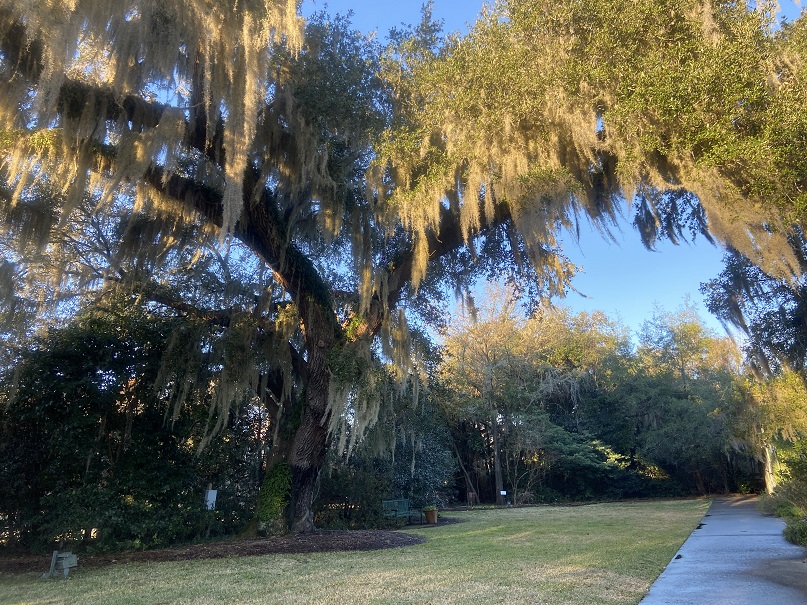 Caroline's Garden
Caroline's Garden
While knowing your zone may not be the most exciting thing, it is absolutely essential to know. Armed with that knowledge, you will be able to make the most informed plant selections for your new garden. With that out of the way, let’s get back to the really fun stuff – plant selection!
 Young conifers in the Brookgreen Gardens' nursery
Young conifers in the Brookgreen Gardens' nursery
To find a greater selection of plants, sometimes turning to seeds is the way to go. Some seeds are easier to start than others, with some germinating quickly, while others may take much longer. Seed packets and seed vendors are usually helpful with providing information about when to start your seeds, how to sow them, and when to expect to see your plant pop up. Seeds and other mail or online order plants can go quickly! Now is the time to get your orders in to ensure you don’t miss out on plants you want. It may be hard to think about planting in January, but plenty of other gardeners have their sights set to the spring, and they may snag some of your favorite plants before you can get them! Depending on the vendor, many will ship the plants at the best planting time for your area, so you don’t need to worry about keeping a plant alive before planting time!
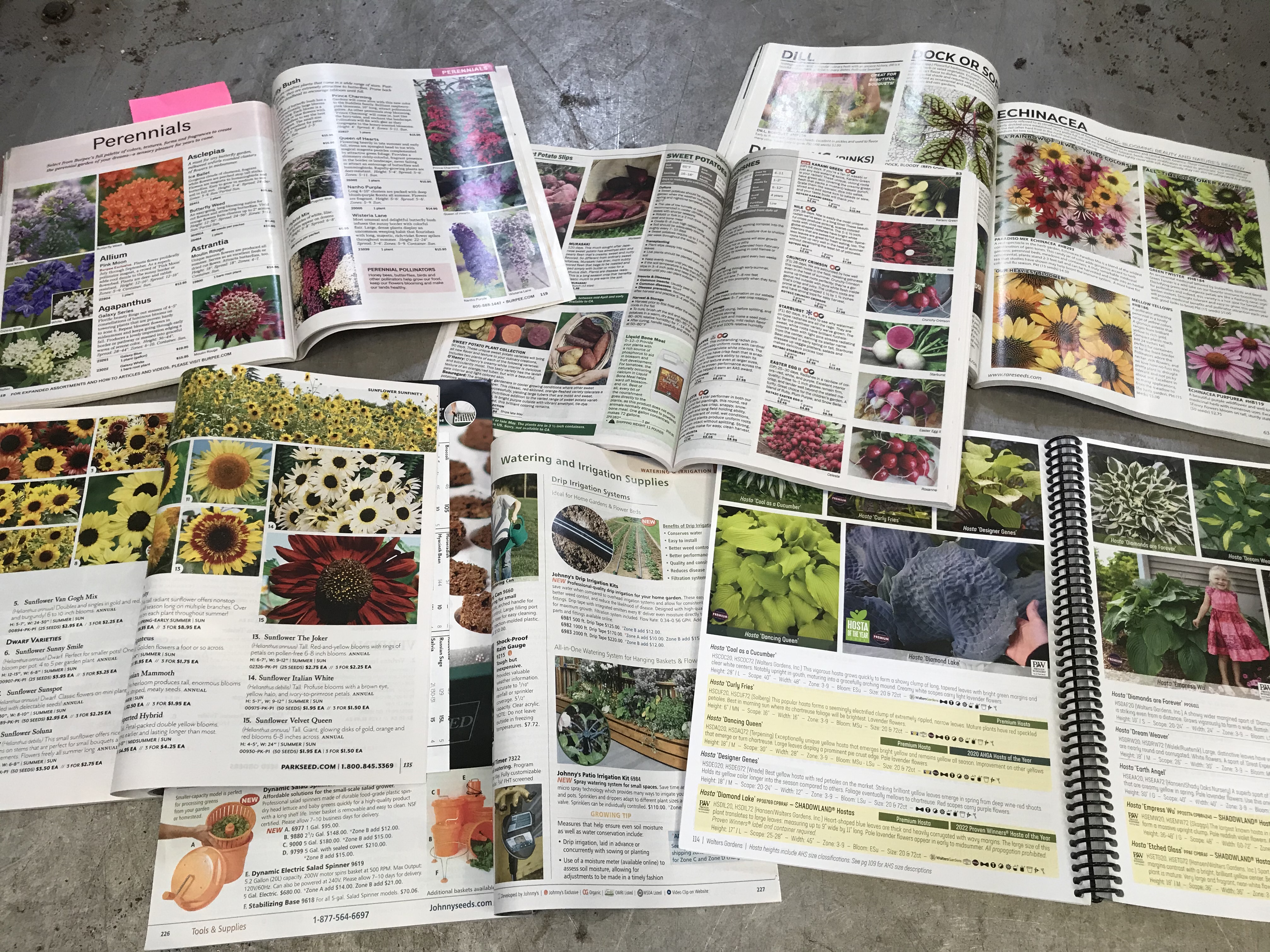 Plant and seed order catalogs
Plant and seed order catalogs
With so much covered, you have even more to think about and consider. Before our next installment, take a trip to a few local nurseries and peruse what they sell, keeping in mind stock is probably lighter this time of year than in the spring. To help you navigate, remember that most nurseries have their sun plants in one area and their shade plants in another (usually under a shade cloth or shaded area). This will help to narrow down where to look for plants that will fit for your space (and save you from falling in love with a plant that won't work!). Of course, don’t forget to look up online retailers for seeds and grown plants to order before their stock runs out!
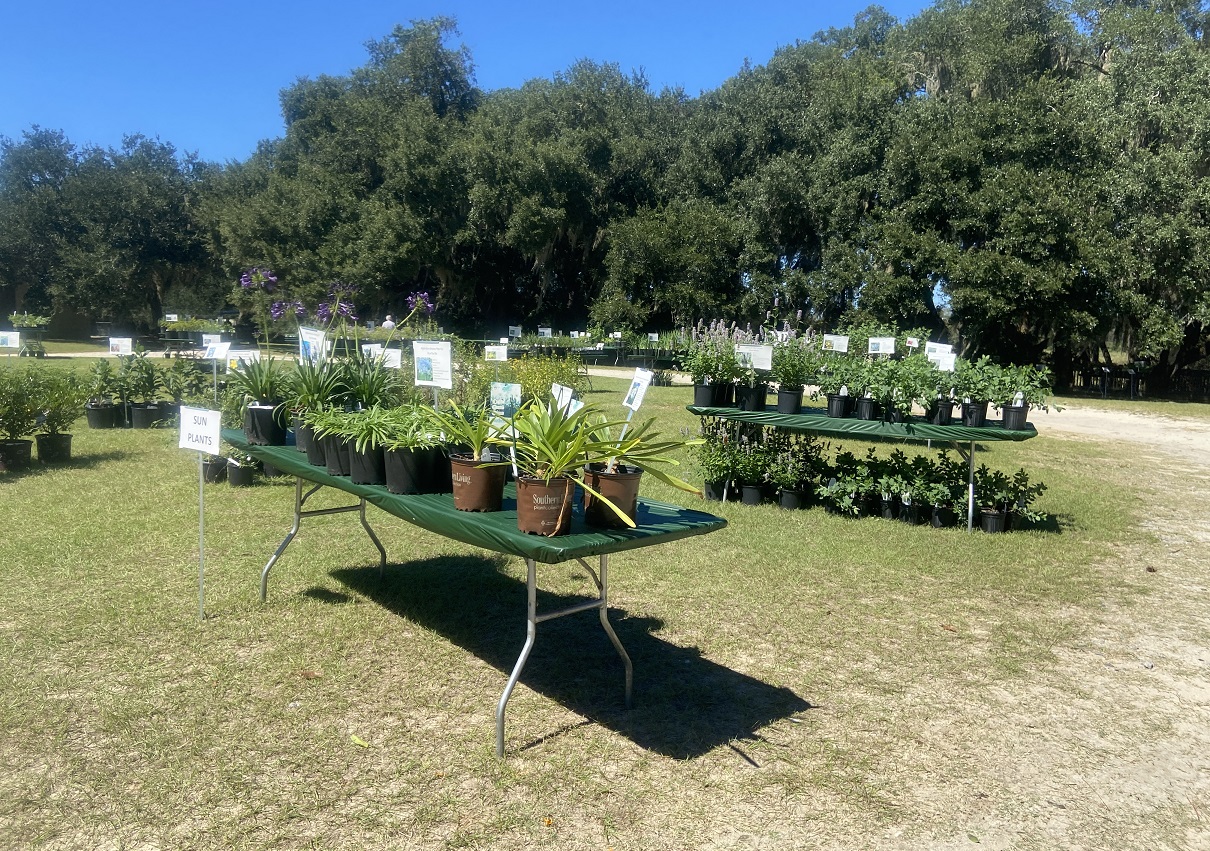 Brookgreen Gardens' Fall Plant Sale 2021
Brookgreen Gardens' Fall Plant Sale 2021
Visits to nurseries and browsing online retailers for plants is one of the most fun and exciting parts of a garden’s creation – it’s window shopping for gardeners! Browsing all the possibilities and planning for your new garden will lead us to our next topic: Tools for Success. Stay tuned!
See you in the Gardens!
Hours
Hours: Monday & Tuesday 9:30 AM - 5:00 PM
Wednesday - Sunday 4:00 PM - 9:00 PM
For daytime admission, gates close at 4:30 PM. For their safety and the safety of our animal collection, pets are not allowed, nor can they be left in vehicles inside Brookgreen. Service animals that have received special training to assist disabled persons are welcome.
Tickets
Daily General Admission Tickets for 7 consecutive days
Children 3 and under: Free
Children 4-12: $14
Adults 13-64: $25
Seniors 65 & Over: $23
Location
1931 Brookgreen Drive
Murrells Inlet, SC 29576
Off US Highway 17 Bypass, between Murrells Inlet and Pawleys Island on South Carolina's Hammock Coast
843-235-6000
GOOGLE DIRECTIONS